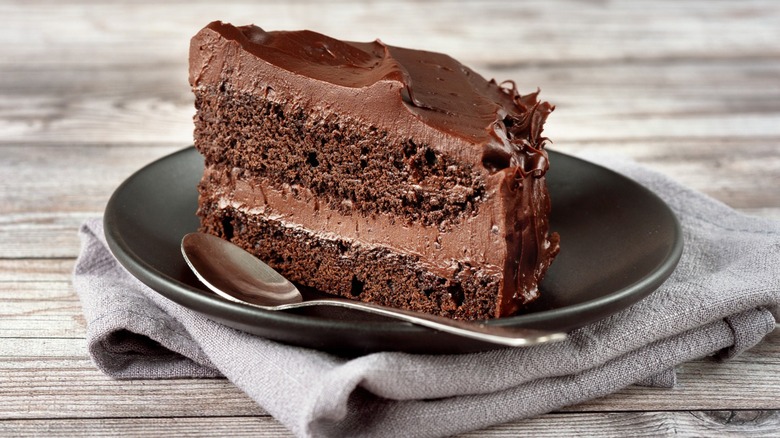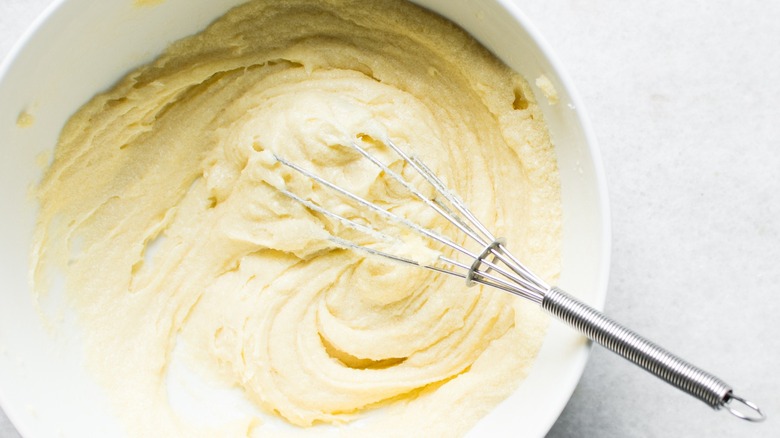To Maintain Your Vegan Cake's Structure, Try This Tip
"Let them eat cake" is one of the most famous quotes associated with the French Queen Marie Antionette, and while there are debates surrounding whether or not she did, in fact, say it, it's often cited as an example of how truly oblivious the Queen was to the conditions her people were living under. Should a similar situation arise and it be proclaimed today by some other person of power or significance, its use of example would still ring true. Some of you are vegan, after all — and making vegan cake can be a challenge.
While the odds of vegans living in France during the 1700s are probably even less likely than the odds that Marie Antionette actually said that, vegan cake is very real. Well, it is in this day and age. Its structure, on the other hand, can be questionable. But if you want a vegan cake that not only rises the same way it would if it were made with all the eggs, butter, and milk your grandma's recipe contains, all you need is an extra two minutes.
Before you even begin mixing your wet ingredients with your dry ones, you should try creaming the butter substitute you're using — whether that be coconut oil or vegan butter — with the sugar. You can do this with or without a stand mixer, but the former will likely be quicker. Either way, you'll need to mix until the two are completely emulsified, as that's what creates the air pockets that will help your cake rise and give it its structure.
Dress up your vegan cake with frosting
The best part about this tip is that it can apply to any vegan cake recipe you choose. From pound cake to olive oil cake, and vegan carrot cake to classic vanilla birthday cake, all you need is a bit of extra time to cream your butter or oil with your sugar before mixing them with the rest of your wet ingredients. After that, gently folding or mixing the dry ingredients with your stand mixer on low is imperative to protect the air pockets and, in turn, your cake's structure.
Just like any other cake, a vegan cake wouldn't be complete without some form of icing. In this case, coconut milk is key for a dairy-free frosting that lives up to the thick, creamy texture of icing made with whole milk. That coconut flavor doesn't go with everything, though, so you could also opt for almond or full-fat oat milk instead. Oat milk has the most neutral flavor profile of the many types of plant-based milk, and its high fat content will help recreate the creamy texture you're looking for.
If you want to make a vegan buttercream frosting, on the other hand, you're going to need some vegan butter. Miyokos and Earth Balance are two brands that are easy to come by at most stores, and they come recommended. With the right amount of plant milk — no more than a couple tablespoons — the structure of your vegan buttercream will be just as sturdy as your vegan cake's.

